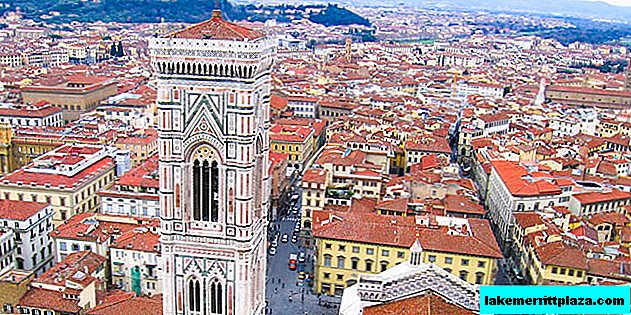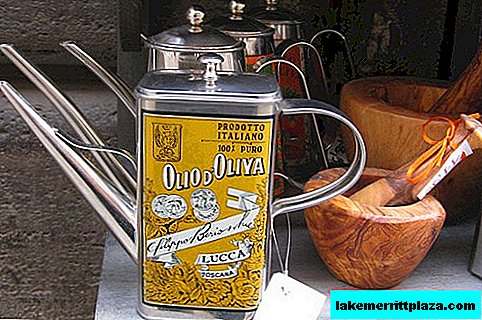The Mouth of Truth (Bocca della Verità) is an ancient image carved in a round slab of Pavonasian marble (marmo pavonazzetto).
The gloomy face of the ruler of the seas and oceans, Triton, is set in the portico of the church of Santa Maria in Cosmedin. The church is located on the left bank of the Tiber River, on the site of ancient Roman buildings. Scientists believe that the attraction is about 2200 years old, and the Romans are convinced that under the stern look of the mask it is impossible to tell a lie!
Description
The mouth of truth in Rome is a time-worn marble disk, the dimensions of which are: 175 cm in diameter, 19 cm in thickness, weight - about 1200 kg.

The outlines of a male face are engraved on it in relief. Eyes, nostrils and mouth are made in the form of holes. The purpose of this item has not been clarified so far.. The most likely are considered versions of the decor of the fountain or the cover of the sewer manhole in ancient Rome.
The person pictured on the disc also remains a mystery: Ocean, Triton, god of the Tiber, Faun. And these are only the most popular versions.
According to the ancient travelers almanac "Mirabilia Urbis Romae" (11th c.), The mouth of truth is endowed with the mystical power of the oracles. "Take the interlocutor to the mask of Faun, and you will understand, he tells you the right or the lie".
Legends

In the Middle Ages, the Mouth of Truth gained its current status as a "lie detector" thanks to the poet Virgilio Grammatico. Zealously practicing magic, Virgil believed that husbands and wives who doubt each other's loyalty will be able to find out the true truth in front of the stone face.In the 15th century, a legend appeared that female cunning is able to surpass the mouth of truth. It was believed that a woman suspected of treason should put her hand in the mouth of a stone deity. The innocent will remain intact, and the transgressor will lose his hand.
Once the windy wife of a Roman nobleman was put to trial by the Mouth of Truth. At that moment, when the woman was going to put her fingers in a stone mouth, a blessed one ran out of the crowd, hugged and kissed her. They kicked the madman away, and continued the trial. When asked whether any other man had touched and kissed her, besides his lawful husband, the donna indicated only a madman. Fearlessly putting her hand in the stone mouth, she remained in perfect health. After all, the judges and the honorable spouse were not aware that the role of the insane was played by a real lover.
The name "Mouth of Truth" was assigned to the disc in the middle of the 15th century, and it was installed vertically only in 1632 by order of Pope Urban III Barberini (Urbano VIII Barberini). At first, directly at the entrance to the church, and then, moved to the portico.
In art
- In the 15th century, the Danish engraver Lucas van Leyden created a series of works under the general title “The Power of Women”, where, among other decorations, the Mouth of Truth appears.
- English-speaking countries met with Lips in 1953, when the picture "Roman Holliday" appeared on a wide screen.
Interestingly, the ancient artifact acted as the voice of the truths of the heroes Gregory Peck and Audrey Hepburn, since they were not honest with each other.
- In 2000, a scene from The Roman Vacations was recreated in the Japanese painting Sleeping Bride, Hideo Nakata.

Also, similar references were used. in the American melodrama "Only You" (Eng. Only You) with Robert Downey Jr. (Robert Downey Jr) and Marisa Tomei starring. - In 1968, the futuristic novel Nightwings by American writer Robert Silverberg (Robert Silverberg). Events take place in the distant future, in a city that is a science fiction cast of Rome. The climactic scene unfolds in front of the Mouth of Truth, where the main characters reveal their secrets.
- Besides, the mask image is used as a decor for the machines that issue prediction tickets produced by DPS-Promatic. Mechanical oracles are popular in Italy, Britain, Spain, China, Japan, Turkey. In the botanical parks of the United States and France, you can also find an imitation of a mysterious antique disk.

How to get there - practical information
- Address: Piazza della Bocca della Verità, 18
- Bus: No. 51.81.85.87.118.160.628.715, C3 (stop Greca), No. 44.83,160,170,716.781, C3 (stop Bocca della Verità), No. 23.280 (Lungotevere Aventino).
- Metro: Line B, Grand Circus Station (Circo Massimo).
- On a map of Rome there is another attraction dedicated to the Mouth of Truth - the fountain Fontana di Bocca della Verità. It is located near the Bocca della Verità bus stop.

- Working hours: Sant Maria in Cosmedin Church and its environs are open to visitors daily from 9:30 to 17:30.
- Tickets: admission is free, waiting in line for about 10-20 minutes.
- Website of the vending machine manufacturer: www.dpsusa.com










